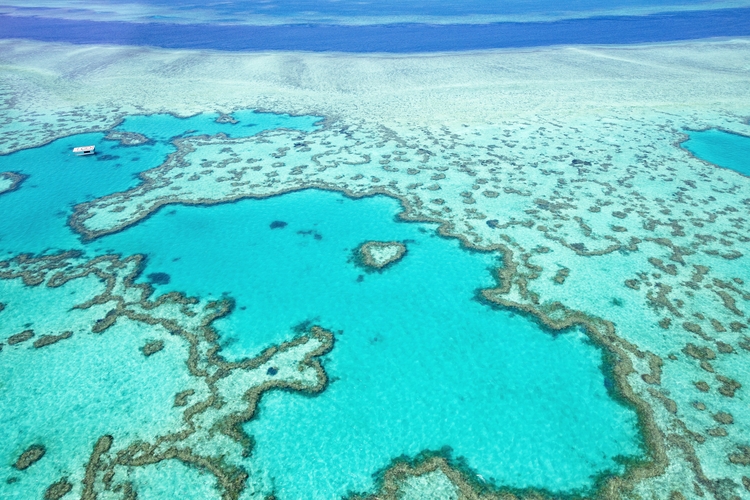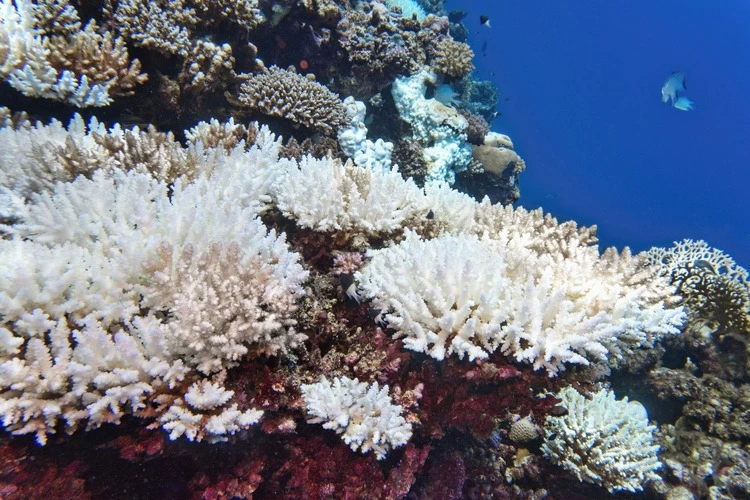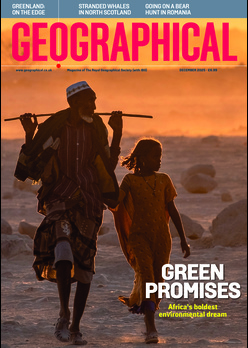
Hard coral cover has declined substantially from high levels of recent years back to near long-term average levels
By
The Great Barrier Reef – the world’s largest reef system – has experienced the biggest annual decline in coral cover in two of the three regions since monitoring began 39 years ago, a new study has found.
According to researchers, such decline can be attributed to climate change-induced heat stress, as well as the impact of cyclones and crown-of-thorns starfish outbreaks (a species known for eating coral).
Enjoying this article? Check out our related reads:
Another major factor leading to the loss of coral cover was 2024’s mass coral bleaching event on the Great Barrier Reef, the fifth mass bleaching event since 2016. The 2024 occurrence led to the largest spatial footprint recorded, with high to extreme bleaching prevalence across the three regions of the Great Barrier Reef.

In total, 124 coral reefs were surveyed in the study. Most reefs (77) recorded hard coral cover between 10 and 30 per cent, three reefs had hard coral cover between 30 and 50 per cent, while two reefs had more than 75 per cent and two reefs less than 10 per cent.
Across the year, coral cover dropped in the northern regions by a quarter (from 39.8 per cent to 30 per cent); in the central region by 13.9 per cent (from 33.2 per cent to 28.6 per cent), and in the southern region by almost one third (from 38.9 per cent to 26.9 per cent). In particular, coral reefs dominated by the Acropora species were among those most impacted by coral bleaching and cyclonic weather.
‘Mass bleaching events are becoming more intense and are occurring with more frequency, as evidenced by the mass bleaching events of 2024 and 2025,’ said Australian Institute of Marine Science (AIMS) CEO Professor Selina Stead. ‘This was the second time in a decade that the reef experienced mass bleaching in two consecutive years.’
‘These results provide strong evidence that ocean warming, caused by climate change, continues to drive substantial and rapid impacts to reef coral communities.’
How can we protect coral reefs?
Coral reefs are incredibly valuable. They contribute around $10 trillion per year globally to the economy, and hundreds of millions of people depend on them for food, livelihoods and cultural practices. Despite their importance, the world has already lost 30 to 50 per cent of its coral reefs.
However, there are many ways coral reefs can be protected to ensure their viability for generations to come, mitigating the impacts they face from pollution, invasive species, ocean acidification and more. For example, growing and planting healthy corals in nurseries is a first step toward building better reefs. Once these corals are fully grown, they can be attached to existing reefs piece by piece with cement, zip ties and nails.
Removing invasive species through algae removal and reintroducing natural predators is another means to boost the presence of coral in ocean waters.
As well as this, creating more marine protected areas that limit fishing, mining and recreational activities can also help to restore coral populations worldwide.




